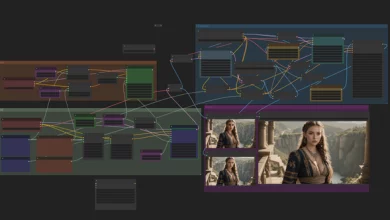
The battle between choosing from Android or iOS as the development platform has been persisting for a long time. The ultimate decision of developing an application in the platform depends upon various criteria than just the cost-effectiveness. However, learning mobile application development also suffers from the same confusion.
When new developers are choosing between these two, the common myth is around iOS as being more challenging to learn. Hence, more mobile app developers prefer Android development over iOS in the software industry. However, here are a few points mentioned which give an entirely new view to this question and it states many interesting facts too that everyone should know to decide whether to choose Android or iOS technology for developing a mobile application.
What is the significant difference when it comes to development?
The most basic question is here. The thing which differentiates iOS from Android and makes the development process “Difficult”. The primary point of difference is the language used for developing an application in iOS and Android. iOS development is done using Objective C or Swift, while Android development requires coding knowledge of Java or Kotlin. Also, the Integrated Development Environments (IDE) used for developing an application are different in both.
As there are various frameworks available for developing an application in Android or iOS, Android Studio by Google is the primary and most popularly used tool. Android Studio can run on Mac OS also, and it extends its support for Windows and Linux alike. But iOS development can only be done on Mac OS, and it does not at all support any other operating systems. Therefore, there is a lot of initial investment over here!! Also, XCode is used as the IDE (Integrated Development Environment) for developing iOS applications.
Is it easier to design UX for iOS?
Switching from Android to iOS doesn’t change much on the development process to be followed, but it indeed changes the development approach of each stage. As the development of UX in Android Studio is well-organized with the help of markup language like XML, the process in iOS for designing the UX differs. From the developer’s point of view, iOS makes designing UX easier by requiring fewer codes to be written and insisting more on visual changes to be performed.
With the help of storyboards, even if the design has been created by other developers, it becomes easy to understand and follow the flow. Therefore, it is comparatively easier to design in iOS once learned and understood thoroughly. While an Android developer has to create it with coding also and iOS supports the drag-and-drop and visual editing features to eliminate much requirement for coding.
But What About UI Designs?
Designing user interfaces in Android and iOS are similar to an extent. However, the only thing making a huge difference here is constraints in iOS. While Android supports straightforward user interface designing with a ready-to-use container system to use for designing UI, iOS does not add it up in XCode and instead, makes use of constraints and use of dimensions necessary to build up and create user interfaces.
Also, there are many components of UX missing in iOS than present in Android, which is a noteworthy point when starting with iOS development and you may have to work a bit more than you used to in Android when developing a user interface for iOS.
Does iOS development support the inclusion of External Libraries?
The Gradle build system is used in Android to set up external libraries. And Android studio has included it in it by default. However, using external libraries during iOS development requires you to use CocoaPods. While running it for the first time is a bit complicated, once configured appropriately, it works fabulously and even works better than Gradle-based systems. Therefore, iOS has many pros over Android when it comes to coding and the inclusion of external libraries.
A direct comparison cannot be made as these two technologies have adapted entirely different approaches for coding an application. Still, the requirement of a developers’ knowledge and expertise remains the same.
Therefore, companies must prefer to hire a developer who is an expert at coding an Android application that can make the best use of Gradle-based systems. In contrast, the iOS developer will ensure the correct use of CocoaPods is done. Therefore, switching to iOS doesn’t change much when it comes to implementing the logic for building an application.
Can you explain more about XCode?
XCode is an IDE used for developing impressive iOS applications. It has been developed by Apple to support iOS development and integrates support exclusively for macOS and extending applications running on macOS, iOS, watchOS, and tvOS. However, when compared to Android Studio, it runs a bit slower when auto-suggesting the code phrases as observed and concluded by many developers.
Also, it makes the errors vanish when building an application only to surprise the developer by failing to develop because of these errors. Despite negative points, it is one of the most preferred IDEs for developing an iOS app like Eventbrite. It holds many advantages over Android Studio and Android application development also, which plays a pivotal role in making your app stand out from the crowd and gives a better choice of mobile application development.
Review on the Simulator
When it comes to running the app in the simulator, XCode facilitates faster simulation and offers a significant advantage over Android Studio. While building and running an Android application in the simulator is slower, Android applications demand much more time to get developed and also for getting tested. As XCode facilitates better simulators than Android, running and trying the designed application is a much faster and smoother experience for the person switching from Android application development to iOS development.
These are the primary points to know when switching from Android development to iOS. The development procedure remains the same for both development technologies; however, the tools and techniques used and the support received from that builds up a whole new experience for the developers.
Hence, changing the development style from Android to iOS is not much of a big deal. But indeed the developer first has to understand and learn the basic concepts of Objective C and Swift to switch from Java or Kotlin easily. Therefore, the thing to keep in mind when changing from Android to iOS technology is preparing yourself for the new technology and developing the basic understanding of the languages used for development to understand and adjust to the learning curve better.




